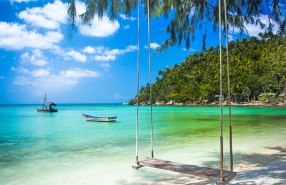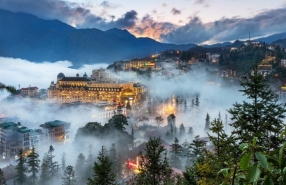Review Of 3 Days In Sapa By Mr. Michel - Trip To Northern Vietnam

Known for its stunning and majestic natural landscapes, a 3-day itinerary in Sapa promises unforgettable experiences for travelers. You will discover limestone mountains, winding passes, poetic waterfalls, and peaceful ethnic villages. This article shares Mr. Michel's review of his Sapa itinerary for 3 days. Check it out and start planning your trip to northern Vietnam today!
Table of Contents
I. Overview of the 3-day Sapa Itinerary
The Vietnam travel agency Autour Asia organized our 3-day and 2-night itinerary in Sapa. This helped us optimize our travel time between different locations. Additionally, our guide was enthusiastic and knowledgeable, sharing interesting information throughout the trip.
We left Hanoi in the evening and took a night train to Sapa. At 6:00 AM, we arrived at Lao Cai station. Then, a driver took us to downtown Sapa, a journey of about one more hour.
Overall, the trip went smoothly. We were able to rest both on the train and in the car that took us to Sapa. The transportation was equipped with warm blankets and drinking water. However, it’s recommended to bring warm clothing, as the morning fog in Sapa is quite thick, and the temperatures can be chilly.
Moreover, the landscapes in Sapa are truly stunning. However, the downtown area of Sapa and some popular tourist sites can be a bit crowded. Despite this, the locals are very warm and welcoming to visitors.
Summary of my 3-day Sapa itinerary:
- Day 0: Hanoi - Night Train to Sapa
- Day 1: Ham Rong Mountain - Sapa Stone Church - Silver Waterfall - O Quy Ho Pass
- Day 2: Sapa - Fansipan Mountain - Muong Hoa Valley
- Day 3: Cat Cat Village - Sapa - Hanoi
II. Detailed Sapa itinerary for 3 days
1. Day 1: Sapa - Sapa Stone Church - Silver Waterfall - O Quy Ho Pass
At the start of our 3-day journey in Sapa, we began by exploring the town center. The entire city was still shrouded in mist, creating a mysterious and magical atmosphere. We first stopped at the hotel to drop off our bags. The buildings of Sapa, with their European-inspired architecture, add an enigmatic charm to the town.
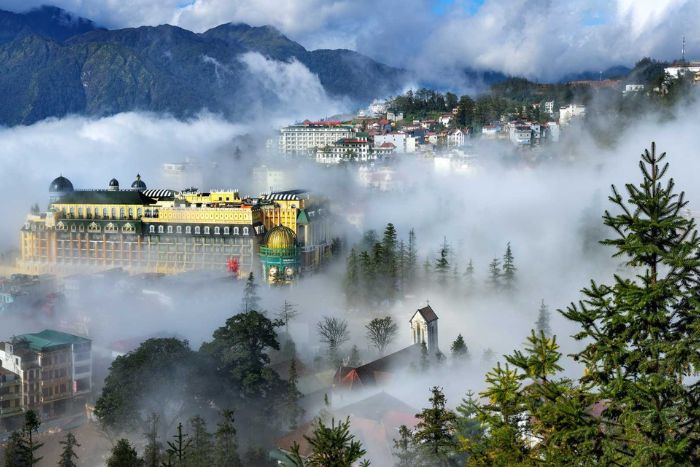
We visited Sapa Square and the stone church before enjoying coffee at a few renowned establishments. Then, we headed to Ham Rong Mountain, located in the heart of the town, where we enjoyed a panoramic view of Sapa in the mist.
After descending the mountain, we had lunch at a nearby restaurant. In the afternoon, we continued our tour to the Silver Waterfall, the Love Waterfall, and O Quy Ho Pass. The latter, described by our guide as one of the most winding passes in Vietnam, offered breathtaking landscapes.
In the evening, we strolled through the Sapa Night Market, where we tasted several local specialties. I was particularly struck by Thang Co, a dish made from horse meat. While the taste may surprise at first, the meat turned out to be delicious and tender. The market also featured many activities, such as costume shows and fortune-telling booths run by locals. Thus, the first day of our 3-day trip to Sapa came to a beautiful end.

2. Day 2: Sapa - Fansipan Mountain - Muong Hoa Valley
On the second morning in Sapa, we woke up very early, as the day was dedicated to climbing Mount Fansipan, known as the roof of Indochina. Since we only had 3 days in Sapa, we decided to take the cable car.
Our adventure began with a train ride through the Muong Hoa mountains. Luckily, the fog that day was very light, allowing us to admire the entire Muong Hoa Valley from the heights. The valley was beautifully covered in white flowers, offering an enchanting landscape.
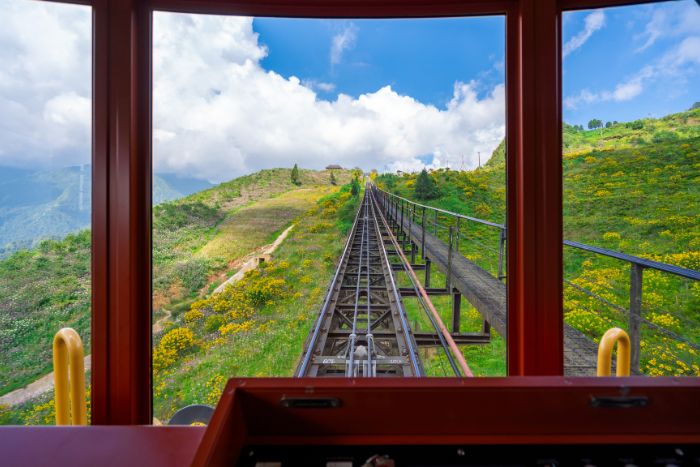
After a full day of exploring Mount Fansipan and the Muong Hoa Valley, we returned to the hotel early to rest, wrapping up our last evening of 3 days in Sapa.

3. Day 3: Cat Cat Village - Sapa - Hanoi
When talking about the ethnic villages in Sapa, our guide recommended visiting Cat Cat Village, known for its romantic landscape, thanks to the river that runs through it and the stilt houses that line it. We were particularly fascinated by the locals dressed in colorful traditional costumes. They also offered handmade crafts. We bought a few souvenirs, such as keychains and embroidered handkerchiefs with ethnic patterns.
And then, we explored the Cat Cat stream, where huge wooden water wheels stood. Once the visit was finished, we had lunch at a local restaurant in Sapa before taking an overnight sleeper bus back to Hanoi in the evening.
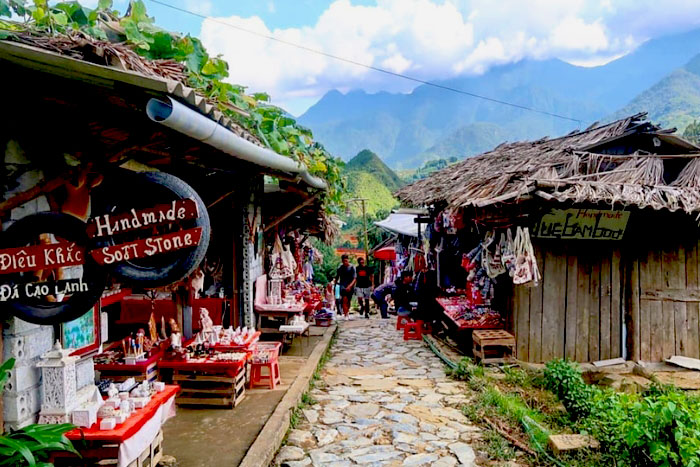
III. Sapa weather for 3 days - Forecast for a trip
Regarding the weather in Sapa for 3 days, since we went at the end of the year, the weather was a bit cool for my wife, but in my opinion, a light jacket was enough to stay comfortable. The guide explained that to enjoy a clear view of the landscapes, the weather should have a little fog. However, this mainly depends on luck, as weather forecasts in Sapa are not always reliable, and most of the time, Sapa is shrouded in fog throughout the day.
Our advisor also recommended visiting Sapa between March and May or between September and November, as these are the ideal periods. During these times, the climate is mild, and it's flower season in the Muong Hoa Valley, offering beautiful landscapes.

This is a complete review by Mr. Michel on his 3-day itinerary in Sapa. Autour Asia warmly thanks you for sharing his detailed itinerary and looks forward to welcoming you again on your next trip to Vietnam.
If you have any questions about Sapa or any other destinations in Vietnam or Southeast Asia, feel free to contact us!
Sapa or Pu Luong? Both destinations offer beautiful landscapes but differ in atmosphere.
Sapa is famous for its stunning mountains, rice terraces, and ethnic villages, with more tourist infrastructure and activities. It's perfect for those looking for iconic hikes and a cooler climate.
Pu Luong, on the other hand, is less commercialized, offering peaceful nature, fewer tourists, and a more authentic experience with traditional villages and serene valleys.
If you prefer a more developed, popular destination, choose Sapa; if you want tranquility and a quieter environment, Pu Luong is the ideal choice.
Here are some travel tips for a 3-day trip to Sapa:
- Prepare appropriate clothing, especially a light jacket, as mornings and evenings in Sapa can be quite chilly.
- Book your bus tickets and hotel in advance to save money and have enough time to prepare.
- If you want to take photos of local people, be sure to ask for their permission.
- During your Sapa 3-day trip, you can visit villages and popular tourist sites during the first 2 days, and spend the last day relaxing and exploring local cuisine in the city center.
- If you lack experience, consider opting for an all-inclusive tour to save time and gain a deeper understanding of the local culture.
Related travel guide
Other similar articles
CUSTOMIZABLE BY LOCAL EXPERTS
Personalized trip at the original price!
REFUND GUARANTEE
We believe in our work and promise to give you money back.
GOOD PRICE / QUALITY
95% satisfied more than expected!
24/7 LOCAL SUPPORT
We are always available online to provide assistance at any time.
Most read articles
Autour Asia is highly recommended on
Embracing the mission of "Satisfied more than expected" and providing authentic experiences, we have received numerous recommendations on reputable travel forums:

















